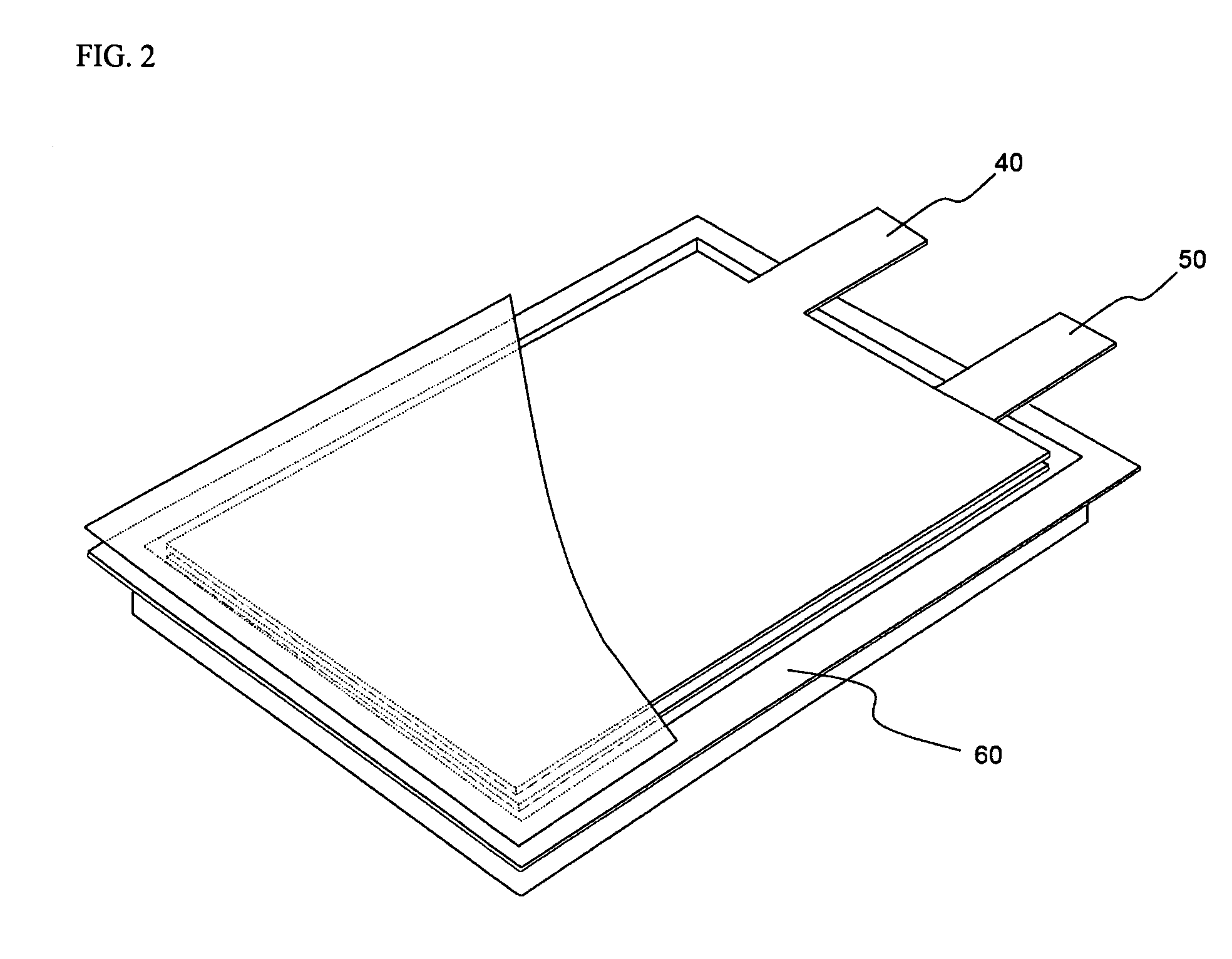Lithium secondary battery with high power
a lithium secondary battery, high-power technology, applied in the direction of manganates/permanentates, nickel compounds, cell components, etc., can solve the problems of low charge density, high cost of lithium cobalt composite oxide, and inability to use in electric vehicles, etc., to inhibit the elution of trivalent manganese, and improve the high temperature cycle characteristics.
- Summary
- Abstract
- Description
- Claims
- Application Information
AI Technical Summary
Benefits of technology
Problems solved by technology
Method used
Image
Examples
example 1
[0055] Lithium manganese-metal composite oxide (A) of Li1.1Mn1.85Al0.054 and lithium nickel-manganese-cobalt composite oxide (B) of LiNi0.4Mn0.4CO0.202 were mixed in a weight ratio of 90:10. 1.25 g of the resulting mixture was added to 25 mL of triple distilled water, which was then subjected to ultra-sonication for 30 min, followed by measuring pH using a pH meter. The results are shown in Table 1 below.
examples 2 through 5
[0056] Experiments were repeated using the same procedure as in Example 1, except that the mixing ratio of Li1.1Mn1.85Al0.05O4 to LiNi0.4Mn0.4Co0.2O2 was varied, and the pH of the thus-obtained product was measured. The results are shown in Table 1 below.
example 6
[0059] In the same manner as in Example 1, Li1.1Mn1.85Al0.05O4 and LiNi0.4Mn0.4Co0.2O2 were mixed in a weight ratio of 90:10 to prepare a cathode active material. The cathode active material, carbon black and, as a binder, polyvinylidene fluoride (PVDF), in a weight ratio of 85:10:5 were mixed in an organic solvent, NMP, to prepare a slurry. The resulting slurry was applied to both sides of aluminum foil having a thickness of 20 μm and dried to prepare a cathode. A button type battery was assembled using the thus-prepared cathode, a lithium metal as an anode, a porous polyethylene film as a separator, and a 1M LiPF6 EC / EMC solution as an electrolyte.
[0060] In order to evaluate high-temperature service life of the thus-prepared battery, the battery was subjected to 50 charge / discharge cycles at a current density of 0.2 C and a temperature of 50° C. Discharge capacity retention rate of the battery was calculated according to the following Equation 1. The results are shown in Table 2 ...
PUM
| Property | Measurement | Unit |
|---|---|---|
| Fraction | aaaaa | aaaaa |
| Fraction | aaaaa | aaaaa |
| Mass | aaaaa | aaaaa |
Abstract
Description
Claims
Application Information
 Login to View More
Login to View More - R&D
- Intellectual Property
- Life Sciences
- Materials
- Tech Scout
- Unparalleled Data Quality
- Higher Quality Content
- 60% Fewer Hallucinations
Browse by: Latest US Patents, China's latest patents, Technical Efficacy Thesaurus, Application Domain, Technology Topic, Popular Technical Reports.
© 2025 PatSnap. All rights reserved.Legal|Privacy policy|Modern Slavery Act Transparency Statement|Sitemap|About US| Contact US: help@patsnap.com



